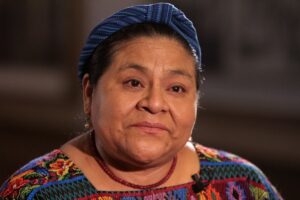In the 1700s, women did not have the rights they have today. Their role was to take care of the children and do house chores. This was also when the Enlightenment was a major intellectual movement, and the principles of reason and individual rights were in focus. Many women thought this included them as well. Maybe they will finally be able to own personal property and vote. Abigail Adams was the spark that started the women’s rights movement. She wrote to her husband, John Adams, and urged him to remember the ladies while making new laws in Congress. She was hopeful of the “new American independency,” and she was excited to see what was to come next.1
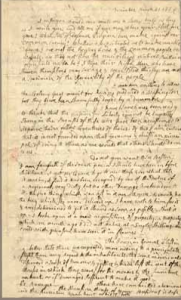
The Enlightenment during the 1700s in America was adopted from England, which encouraged free thinkers like John Locke and Benjamin Franklin, a close friend to Abigail and John Adams. It was a time when philosophers like John Locke used reasoning and science in their daily life. It also influenced American leaders like Benjamin Franklin to apply Enlightenment principles in America. John Locke wrote a book shortly before he died during the Enlightenment, which was about how everyone is born with rights and has freedom. Abigail Adams took that seriously; everyone deserves freedom. She wanted America to live up to the freedom part. In her letter, the influence of the Enlightenment was shown. She used fairness and reasoning to argue why women deserve the same as men. Only allowing men to be free thinkers and educated, she wanted to be one as well. Abigail thought the Enlightenment included everyone; she realized it did not.2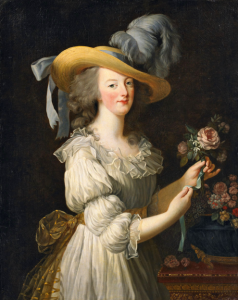 A portrait of Abigail Adams, wife of John Adams. She is holding a flower for her portrait, from around 1820s. Courtesy of The Massachusetts Historical Society.[/caption]
A portrait of Abigail Adams, wife of John Adams. She is holding a flower for her portrait, from around 1820s. Courtesy of The Massachusetts Historical Society.[/caption]
Many women weren’t educated in the 1700s, and that included Abigail Adams. Women’s education was considered unnecessary. She hated the fact that she couldn’t read or write, so she taught herself. She read mainly her family’s books and studied many subjects. When Abigail and John Adams got married, he liked that she was educated and knowledgeable. Her intelligence surprised him. They could talk about anything, from philosophy to history. John often asked Abigail for advice on what he should do in Congress. John saw her as an equal; he once said, “Cleared and fuller than I can get from a whole committee of men.”3
In March 1776, Abigail Adams finally sent out her first letter expressing how she felt women should have some consideration when making these laws. In this letter, Abigail told John that this was his chance to make a difference. To change the way things have been done in the past and change the future for the better. When John Adams received the letter, he laughed. He made her feel like she wasn’t anything more than his wife. Abigail received the letter and was upset that he was teasing her when she was very serious about keeping the ladies in mind. Abigail was furious. She wrote him back, expressing how “it’s not fair men are allowed to be tyrants, but women have no voice in anything.” Abigail couldn’t believe the responses John Adams was giving her. He was teasing her like a child. She was upset and didn’t know how her own husband could react like that towards her. They exchanged 1,100 letters to each other over a 5-day period.4
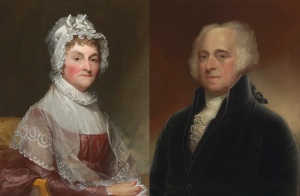
When John Adams received this letter, he couldn’t help but laugh at what Abigail was requesting. He continued to write about what Congress was doing. He did state, “But your Letter was the first intimation that another Tribe more numerous and powerful than all the rest were grown discontented.—This is rather too coarse a Compliment, but you are so saucy, I won’t blot it out.” He continued to talk about what was going on in Congress, and hoped George Washington, who was a general at the time, would fight in a war. After teasing Abigail, John Adams dismissed her request and did not give it another thought.5
Abigail Adams’ close friend, Mercy Otis Warren, was a freethinker and agreed that women should have rights as well. They had the same interest; specifically, they were both advocates for women’s rights. As she wrote letters to John Adams, she also wrote one to her close friend, Mercy, expressing her frustrations with the limits put on women and how men have it all.
6
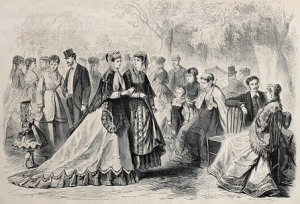
Abigail Adams threatened her husband by saying the ladies would start a rebellion if they did not get a chance in this world. Abigail Adams’ requests were ignored. John Adams continued with creating his government and laws without the thought of women in mind, and essentially excluding women’s rights. She could not believe that there were limits even in their own marriage. Abigail was disappointed when she realized what a hypocrite her husband was.7
Although Abigail Adams was not alive to see the evolution of women’s rights, her brilliant courage helped many stand up for their right to vote. While her attempt at change in women’s rights was not successful, that didn’t stop her from continuing to be politically involved. Her influence during the 1700s is what sparked many feminist historians to speak up. Her voice was a reminder to keep fighting for what’s right. From her husband being in the government, to attempting to legalize education for women and a voice for future change in the women’s rights movement.8
- “How Did Women Gain the Vote?: The Promise of 1776 for Women,” accessed November 6, 2025, https://www.amrevmuseum.org/virtualexhibits/when-women-lost-the-vote-a-revolutionary-story/pages/how-did-women-gain-the-vote-the-promise-of-1776-for-women. ↵
- “John Locke,” American Battlefield Trust, accessed November 6, 2025, https://www.battlefields.org/learn/biographies/john-locke. [caption id=”attachment_168501″ align=”alignright” width=”238″ ↵
- Abigail Adams, John P. Kaminski, and Center for the Study of the American Constitution, America’s Founders, second edition (Center for the Study of the American Constitution, 2020), https://asset.library.wisc.edu/1711.dl/2BMG5TIP2BTWE9C/R/file-21898.pdf. pg. 40 ↵
- “Abigail Adams Reminds John To Remember the Ladies – New England Historical Society,” accessed September 28, 2025, https://newenglandhistoricalsociety.com/abigail-adams-reminds-husband-remember-ladies-2/ ↵
- Abigail Adams and John Adams, “REMEMBER THE LADIES,” ed. J. H. Butterfield, Abigail Adams: Letters (Library of America 2016), 5-7, https://loashared.s3.amazonaws.com/static/pdf/Adams_Remember_Ladies.pdf. ↵
- Abigail Adams and John Adams, “REMEMBER THE LADIES,” ed. J. H. Butterfield, Abigail Adams: Letters (Library of America 2016), 5-7, https://loashared.s3.amazonaws.com/static/pdf/Adams_Remember_Ladies.pdf. ↵
- Paul C. Nagel, The Adams Women : Abigail and Louisa Adams, Their Sisters and Daughters (Harvard University Press, 2002), SMU.b1407122). ↵
- Natalie Bober, Abigail Adams : Witness to a Revolution (Atheneum Books for Young Readers, 1995), SMU.b1222944). ↵


